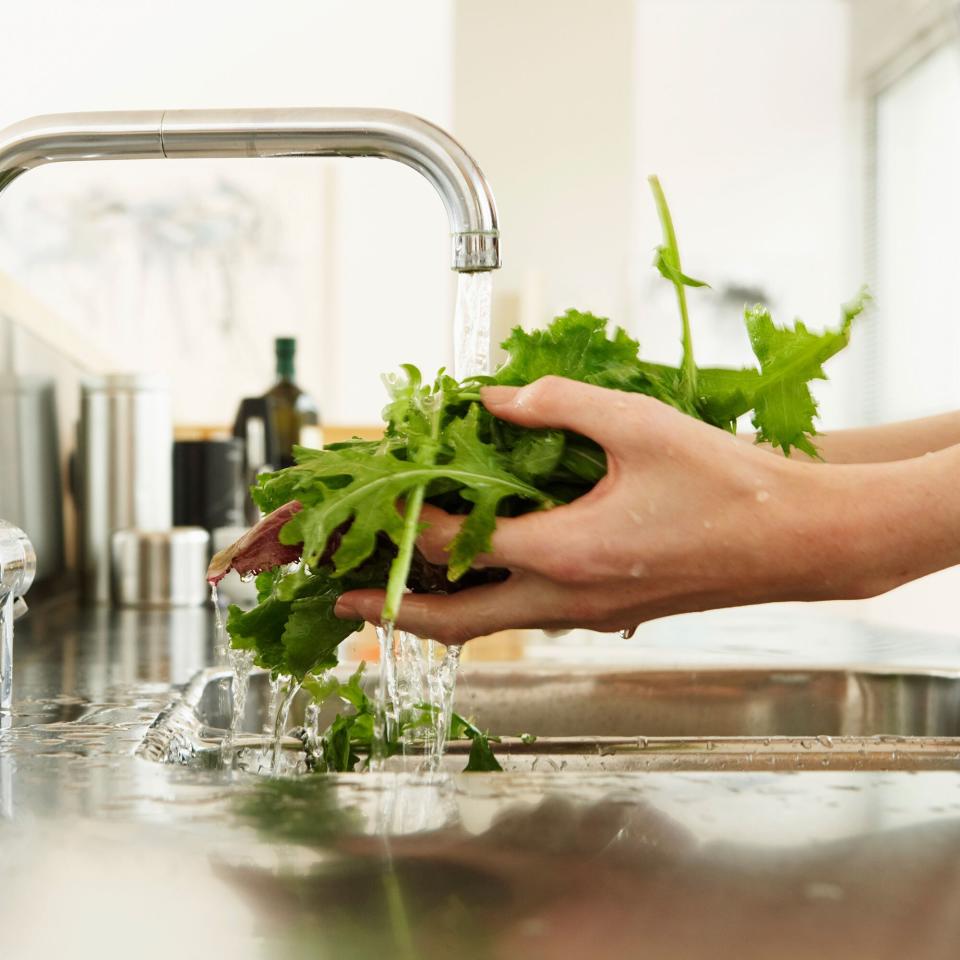The One Place in Your Kitchen You Should be Cleaning but Probably Aren't
Cleaning your kitchen helps to prevent foodborne illnesses. The countertops, the stovetop and the sink are obvious places to clean, especially since these surfaces may have come in contact with food, but the less obvious places, like the kitchen faucet, are often overlooked. Find out why you should clean your kitchen faucet regularly and how you can keep it clean.
Related: 6 Filthy Places in Your Kitchen You Should Be Cleaning Every Day
Why you should be cleaning the faucet of your kitchen sink
Like the kitchen sink, the faucet and the handles are perfect spots for germs to harbor. The faucet, specifically its handle, is the first thing most people reach for after handling raw meat. Not only that, keeping the faucet clean will help it last for years.
How often to clean your faucet
How often you give your faucet a good scrub-down, depends on a few factors. You should clean your faucet after you handle raw meat, wash dirty cutting boards or any equipment that has had contact with uncooked meat or poultry. The reason here is the same reason we don't advise rinsing chicken in the sink—microscopic pathogens can splash onto your faucet, and potentially onto something you eat, and make you sick.
Water quality can also determine how often your faucet needs to be cleaned. Mineral deposits like calcium and limescale may build up in your faucet and on its surface, creating grime that makes your sink area less appealing. But more importantly, these deposits may affect the faucet's water pressure and flow. You may notice a change in the flow of water from the faucet head, indicating that it may be time to clean it.
Don't forget to start with clean equipment! The cleaning scrubs, brushes and cloths used for cleaning the sink and faucet should be replaced frequently to avoid the spread of germs.
Related: How Often Should You Be Cleaning Your Dish Towels?

Tay Jnr / Getty Images
How to clean your faucet
You don't need expensive products to clean your faucet. Some essential tools for cleaning your faucet include dish soap, water, baking soda, white vinegar, a non-abrasive scrubber, a sponge and a soft-bristled toothbrush. Kitchen faucets are commonly made with stainless steel, bronze, copper and zinc. Here is what you need to clean each type of faucet fixture:
Stainless steel: Soapy water, vinegar and baking soda can help maintain the like-new appearance. You can use a toothbrush to scrub the small crevices, then wipe the surface with a microfiber cloth.
Brass: Soap and water or vinegar will do the magic. Acids like lemon juice can help remove the visible tarnish.
Bronze: Mix one teaspoon salt with three quarts of water to wipe down the faucet fixture and handles. Use a scrub to remove the visible grime, and dry the faucet with a soft cloth.
Copper: Soap and water, and vinegar will keep it clean. Keep in mind that tarnish is common with copper.
Zinc: Vinegar or lemon and salt. The lemon and salt may dull the metal faucet fixture, and you may require regular polishing.
It is best to clean your sink first before the faucet. Once the sink is cleaned, use a sponge with soapy water to wipe the faucet and handles. For hard-to-reach places of the faucet, use a soft-bristled toothbrush.
In addition to the fixture and the handles, the nozzle also needs to be cleaned since mineral deposits build up there. To remove the residues, fill a small bag with white vinegar, submerge the head, and use an elastic band to wrap around the fixture. Let the spout sit in the vinegar solution for a few hours or overnight to soften the deposits. Then, remove and drain the bag, and use a soft brush to remove the residues.
For faucets with extendable heads, you should be able to unscrew the head from the rest of the faucet apparatus, making it easier to soak and clean.
Should I be cleaning the other faucets in my house?
Like the kitchen, the bathroom is also a place where mildew, mold and bacteria live, so keeping the bathroom and the faucets clean are also essential. Follow the same procedures as you would for the kitchen faucets for the bathroom.
Bottom line
Keeping the kitchen clean and sanitary requires cleaning the less obvious places, like the faucet. Adding the faucet handles and head as part of your daily routine cleaning will help reduce the risk of foodborne illnesses.

